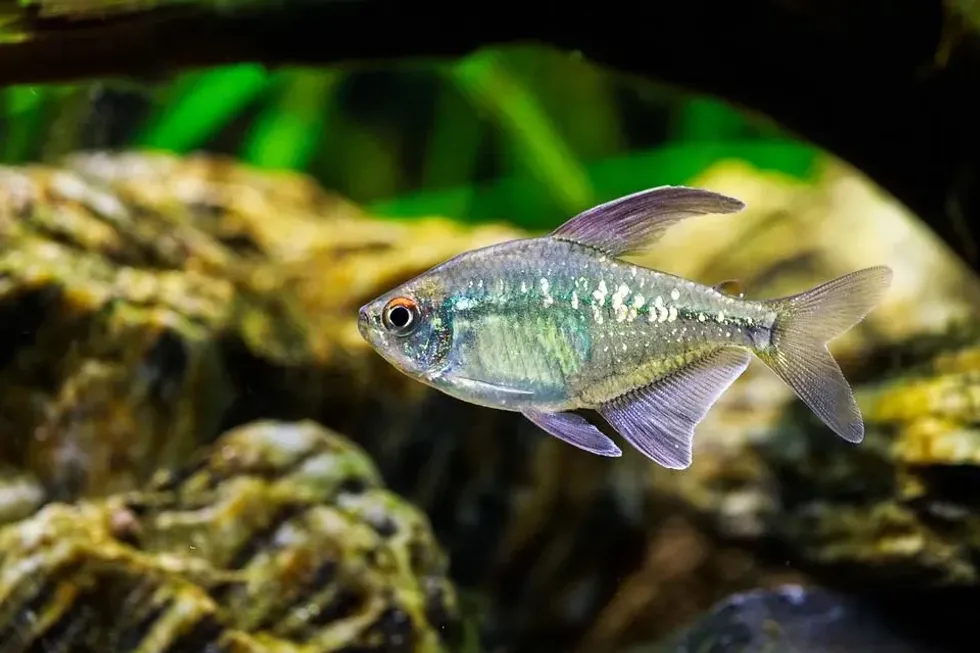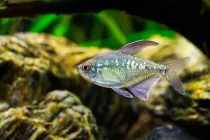Tetra is the common name that is given to the small freshwater characiform fishes. It is a type of fish that is very small in size and is the prey to many predators. Tetras are compressed and have fins that are typically identical.
Tetra fishes are calm, colorful, and are peaceful in their nature. Tetra comes in various colors, including neon and blue, and are very adorable in their appearance. They are very attractive in color, and mainly imported from South America.
Tetras are fascinating as they have different colors all over their body. Different types of tetra include neon tetra, ember tetra, cardinal tetra, rummy nose tetra, Congo tetra, black neon tetra, bloodfin tetra, blue tetra and more.
After reading these tetra fish facts, including neon tetra facts and x-ray tetra facts, you may also look at rockfish facts and wrasse facts.
Tetra Interesting Facts
What type of animal is a tetra?
Tetra is a type of fish that belongs to the family of Characidae. These fishes are quite adorable as they look very shiny. Tetras are mostly found in waters among their groups.
What class of animal does a tetra belong to?
Tetra fish belong to a class of Actinopterygii and come in different colors. Some of the subspecies are green neon tetra, red eye tetra, lemon tetra, blue tetra, red tetra, black phantom tetra, silver tip tetra, red minor tetra, green fire tetra, ruby tetra and more.
How many tetras are there in the world?
There is no accurate number as to how many tetras there are in the world. Tetras are known as schooling fish.
Some of the known varieties are Buenos Aires tetra, emperor tetra, black tetra, Mexican tetra, bleeding heart tetra, penguin tetra, bucktooth tetra, x-ray tetra, vampire tetra, blue tetra and more.
They live mostly in groups and are found to be happy and stress-free when they are in their respective groups. When keeping these fish as pets, you should have at least five to six tetras so that they can play with each other in the tank as a group, or else they will get lonely.
Where does a tetra live?
Tetras prefer to live in rivers and streams. Tetras also live in tanks with five to six other tetras. Tetra fishes stay healthy in water that is marginally acidic as their body has the capacity to tolerate pH between 6 and 7.5. Some tetras also live in locations that are shady and have a lot of plant life.
What is a tetra's habitat?
Tetra’s habitat consists of rivers and streams. Tetras also prefer to stay in tanks with their group of tetras. Their habitat also consists of waters that are marginally acidic as they can tolerate pH between 6 and 7.5. Tetras also love locations that are shady and dense.
Who do tetras live with?
Tetras cannot live alone in a small fish tank. Tetras get lonely, stressed or depressed, and there are also chances that they might die if this species are left alone. Therefore, tetras live in small groups with other tetra fishes.
How long does a tetra live?
Neon tetra lifespan is known to be around eight years but this can vary based on different factors such as climate change, surroundings, and other things that determine the lifespan of the tetra fish.
How do they reproduce?
Tetra fishes engage in the courtship in the fishing tank itself and spawn usually in the morning shortly after the lights are turned on. Tetra fishes are also ready to breed in the tank only, and then after the courtship is complete, the females give birth to the little ones.
What is their conservation status?
The conservation status of the tetra fishes is Not Threatened as they are huge in number.
Tetra Fun Facts
What do tetras look like?
The body of the tetra is greenish in color with a bit of grey, black, and yellow. They have fins that are like veils and have eyes that are black which are brightly outlined with a vivid red color. This species look very adorable in their appearance as they come in different colors.
How cute are they?
Tetra fishes are very cute as they are small in size and come in different colors that vary accordingly. When they are seen together in a group, they look even more adorable. Tetras are a popular choice for owners of aquariums because of their color.
How do they communicate?
Tetra fishes communicate by using body language and motions. When the tetras squabble, they display to one another and hold their fins in a very rigid way in order to communicate.
How big is a tetra?
Tetra fishes are very small in size when compared to the other species of fishes. They look very small and have many predators as they are very tiny in size.
How fast can a tetra swim?
There is no accurate data on how fast a tetra can swim, but as they are small in size, they tend to swim fast and quickly when they are in groups.
How much does a tetra weigh?
Tetras weigh between 0.0004-0.001 lb (0.008-0.022 oz).
What are the male and female names of the species?
There is no specific name for the male and female species of the tetra fish. They are known as males and females respectively.
What would you call a baby tetra?
A baby tetra is called fry, and they are hatched just a couple of days after the eggs are laid.
What do they eat?
Tetra fish food includes aqueon tropical flakes, color flakes, tropical granules, shrimp pellets, algae, brine shrimp, and worms.
Are they dangerous?
No, tetra fishes are not dangerous.
Would they make a good pet?
Yes, tetra fishes are good pets, but these freshwater fishes should be kept in groups together in a tank, or there are chances that they might get sad, depressed, and might die. You must also acquire knowledge about the basics of tetra fish care to ensure that your pet tetras can lead a healthy life.
Did you know...
The tetra fish species is one of the most well-known and also one of the most popular freshwater fish to be kept in aquariums and tanks all over the world. There are around 150 species of tetra fishes that are known. Freshwater tetras are very easy fishes to be kept in aquariums and tanks as well.
Female tetras are known to lay eggs in huge numbers on a leaf in the water. They tend to die very easily when there are changes in their fish tank environment. Neon tetras can even eat their babies from the breeding tank.
Having your own tetra
When you get tetra fish as a pet in your tank, it is very important to keep them in a group and they should be taken proper care of. They tend to get very lonely if they are left alone in the neon tetra tank.
They are very friendly in nature and do not cause any harm to the other fishes or humans.
The neon tetra temperature must be between 68–82 °F (20-28 °C). You can tell if your tetra is a male of female by looking at the size of them, female tetras tend to be a little bigger than males.
Do tetras kill other fish?
Yes, sometimes tetra fishes can kill other fishes, but this is uncommon.
Here at Kidadl, we have carefully created lots of interesting family-friendly animal facts for everyone to discover! Learn more about some other fish including tang fish, or ray.
You can even occupy yourself at home by drawing one of our Tetra coloring pages.










